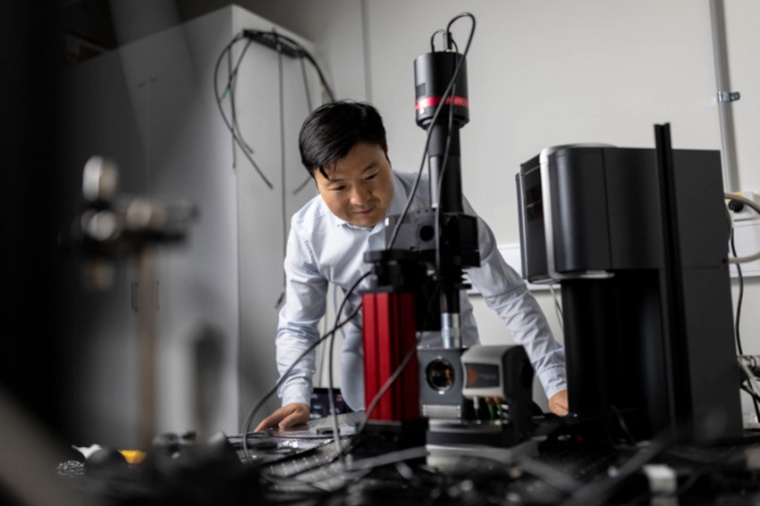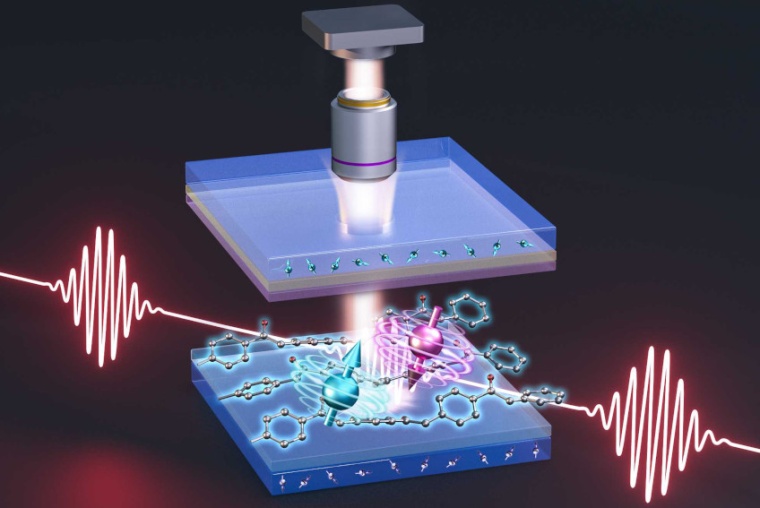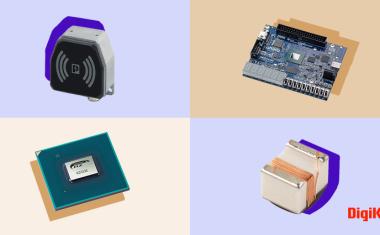Quantum sensing in your pocket
OLEDs can be used to map magnetic fields using magnetic resonance.
Smartphones could one day become portable quantum sensors thanks to a new chip-scale approach that uses organic light-emitting diodes (OLEDs) to image magnetic fields. Researchers from the ARC Centre of Excellence in Exciton Science at UNSW Sydney have demonstrated that OLEDs can be used to map magnetic fields using magnetic resonance. Sensing of magnetic fields has important applications in scientific research, industry and medicine. This technique is able to function at microchip scale and does not require input from a laser.


The majority of existing quantum sensing and magnetic field imaging equipment is relatively large and expensive, requiring either optical pumping from a high-powered laser or very low cryogenic temperatures. This limits the device integration potential and commercial scalability of such approaches. By contrast, the OLED sensing device prototyped in this work would ultimately be small, flexible and mass-producible. The techniques involved in achieving this are electrically detected magnetic resonance (EDMR) and optically detected magnetic resonance (ODMR). This is achieved using a camera and microwave electronics to optically detect magnetic resonance, the same physics which enables magnetic resonance imaging (MRI).
Using OLEDs for EDMR and ODMR depends on correctly harnessing the spin behaviour of electrons when they are in proximity to magnetic fields. OLEDs, which are highly sensitive to magnetic fields, are already found in mass-produced electronics like televisions and smartphones, making them an attractive prospect for commercial development in new technologies. Dane McCamey of UNSW said: “Our device is designed to be compatible with commercially available OLED technologies, providing the unique ability to map magnetic field over a large area or even a curved surface. You could imagine using this technology being added to smartphones to help with remote medical diagnostics, or identifying defects in materials.” Rugang Geng added: “While our study demonstrates a clear technology pathway, more work will be required to increase the sensitivity and readout times.” (Source: ARC / UNSW)
Link: ARC Centre of Excellence in Exciton Science, School of Physics, UNSW Sydney, Sydney, Australia
most read

Hexagon plans spin-off
Hexagon plans to spin off its Asset Lifecycle Intelligence and Safety, Infrastructure & Geospatial divisions into a new company called Octave.

Digikey expands product range
The company added 31,000 new parts to its range in the third quarter of 2025

ams Osram extends contract with CFO
The Supervisory Board has extended the contract with CFO Rainer Irle until October 15, 2030.

New member of the board of VDMA Robotics + Automation
Dr. Michael Jürgens, CEO of Kuka Robotics, has been appointed to the board of the VDMA trade association.

Qioptiq Photonics becomes Excelitas Germany
The renaming is part of the global consolidation of the Excelitas Group.






